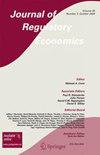监管审查时间对渐进式创新和激进式创新的影响:来自高风险医疗器械市场的证据
IF 1.4
4区 经济学
Q3 ECONOMICS
引用次数: 0
摘要
我们从理论和实证角度研究了监管审查时间的变化对企业选择激进创新还是渐进创新的影响。我们对进入新的细分市场(广义边际)和增加特定行业的创新数量(密集边际)进行了区分。我们的理论研究表明,由于申请审查时间缩短,进入医疗器械细分市场的企业增多。它还预测了企业层面的替代效应,表明企业将其研发工作转向审查时间相对较短的创新申请。为了检验理论预测,我们利用了美国食品药品管理局的独特数据集,其中包含了 1978-2007 年期间高风险医疗器械市场的所有产品市场批准情况。实证结果总体上支持我们的理论预测。然而,结果还显示,与激进型申请相比,企业对渐进型申请审查时间的变化反应更快。本文章由计算机程序翻译,如有差异,请以英文原文为准。
The impact of regulatory review time on incremental and radical innovation: evidence from the high-risk medical device market
We theoretically and empirically study the effect of variation in regulatory review time on firms’ choices between radical and incremental innovations. We differentiate between entry into new segments (the extensive margin) and increasing the number of innovations in a given sector (the intensive margin). Our theoretical investigation indicates additional entry into medical device segments as a result of shorter application review times. It also predicts firm-level substitution effect, suggesting firms shift their R&D to innovation applications with relatively shorter review times. To test the theoretical predictions, we utilize a unique data set from the U.S. Food and Drug Administration that contains all product market approvals in the high-risk medical device market for the 1978–2007 period. The empirical results generally support our theoretical predictions. However, the results also show that firms are more responsive to changes in the review time for incremental applications compared to radical ones.
求助全文
通过发布文献求助,成功后即可免费获取论文全文。
去求助
来源期刊

Journal of Regulatory Economics
ECONOMICS-
CiteScore
2.40
自引率
0.00%
发文量
14
期刊介绍:
Recent legislative and policy reforms have changed the nature of regulation. Partial deregulation has created a new dimension to regulatory problems, as the debate is extended to include diversification and new forms of regulation. The introduction of incentive-based rate schedules and ratemaking procedures, the integration of demand-side programs with planning for capitol expansion, and other developments, raise a host of theoretical and empirical questions. The Journal of Regulatory Economics serves as a high quality forum for the analysis of regulatory theories and institutions by developing the rigorous economics foundations of regulation. Both theoretical and applied works, including experimental research, are encouraged. Research in all aspects of regulation is of interest including traditional problems of natural monopoly, antitrust and competition policy, incentive regulation, deregulation, auction theory, new policy instruments, health and safety regulation, environmental regulation, insurance and financial regulation, hazardous and solid waste regulation, universal service obligation, and consumer product regulation. The JRE provides researchers, policy-makers, and institutions with current perspectives on the theory and practice of economics of regulation. While there are a number of journals and magazines that include the study of regulation, the JRE is unique in that it fills a gap in the market for a high quality journal dealing solely with the economics of regulation.Officially cited as: J Regul Econ
 求助内容:
求助内容: 应助结果提醒方式:
应助结果提醒方式:


